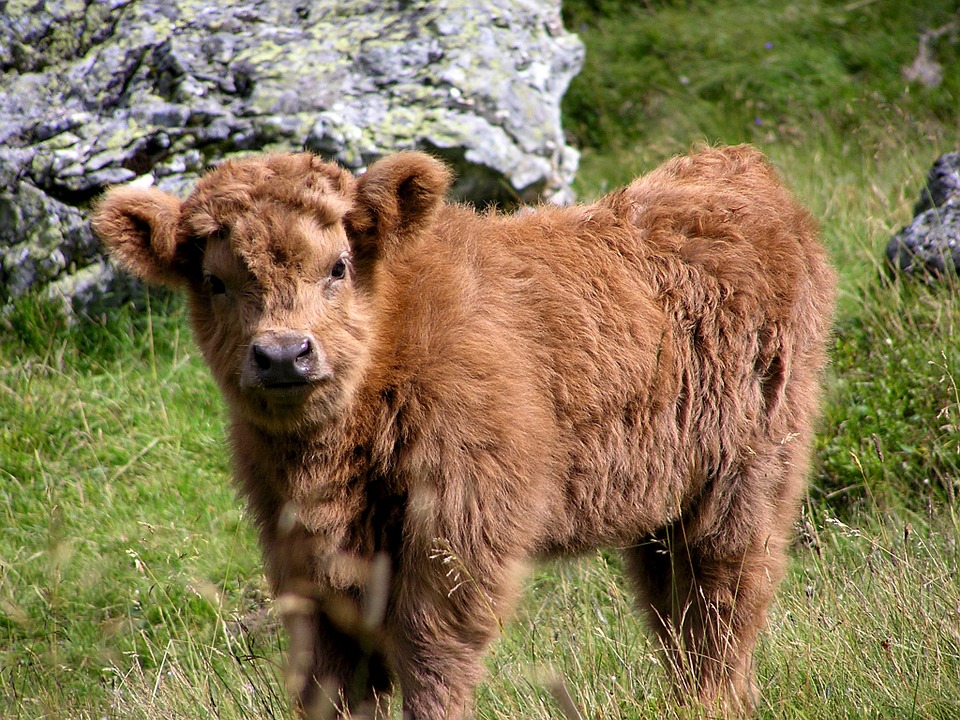“Herd” Of Miniature Cattle?
Miniature pigs and miniature horses are well-known pets that offer unusual and adorable companionship, but the increasingly common miniature bovine is also making an entrance to the modern homesteading scene.
 Dr. Evelyn MacKay, a clinical assistant professor of food animal medicine and field service at the Texas A&M College of Veterinary Medicine & Biomedical Sciences, says the care requirements of miniature cattle are similar to those of their larger counterparts, just on a smaller scale.
Dr. Evelyn MacKay, a clinical assistant professor of food animal medicine and field service at the Texas A&M College of Veterinary Medicine & Biomedical Sciences, says the care requirements of miniature cattle are similar to those of their larger counterparts, just on a smaller scale.
“Miniature cattle are basically just smaller cattle,” MacKay said. “While they’re more manageable because of their size, they still require training and time to be halter broke and tame.”
Selectively bred to be shrunken down for the domestic sphere, miniature cattle usually range between half and a third of the size of traditional cattle, depending on their breed. Although their smaller size does reduce their space requirements, MacKay does not recommend these animals for suburban dwellers, as they still require about a half-acre of space for each animal.
“Miniature cattle are still herd animals and enjoy social stimulation,” MacKay said. “They should be kept with other cattle, usually same size to avoid injury from fighting. They can also be kept with other species.”
The diet of a miniature cattle is the same as a full-sized bovine, just at a reduced volume, MacKay advises. This means they consume hay or fresh pasture and need access to fresh water at all times. Typically, miniature cattle consume 2% to 4% of their body weight in food per day.
Miniature cattle also have similar health requirements as full-sized cattle, meaning they require the appropriate vaccines, hoof trims, and fly control to keep them healthy. Potential owners should be prepared to provide routine veterinary care to their new pet, as they would any other animal.
Owners looking into a new bovine buddy should be aware that the temperament of these animals is variable, although they are often more tame than full-sized cattle.
“They are fully capable of being mean, too,” MacKay said.
Beyond companionship, potential owners may be interested in the other benefits miniature cattle can offer. MacKay says that while miniature cows produce milk for their calves, she doesn’t know that anyone is using them as dairy animals on a large scale.
Some breeds, such as the Miniature Belted Galloway, have a soft, wooly undercoat that can be used to produce yarn. Others, like Scottish Miniature Highland cattle, will clear your yard of wood lots and tree sprouts. With a rich history, Miniature Zebu cattle, one of the oldest breeds of cattle, are often kept for showing.
Although miniature cattle may be an unexpected choice, their smaller size makes them a more manageable alternative for hobby farmers than their full-sized counterparts.
As is often said, good things come in small packages!
Pet Talk is a service of the College of Veterinary Medicine & Biomedical Sciences, Texas A&M University. Stories can be viewed on the web at vetmed.tamu.edu/news/pet-talk. Suggestions for future topics may be directed to editor@cvm.tamu.edu.


